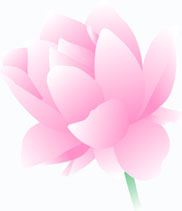PADMA PURANA |
|
 |
Daanasand Tirtha Yatras-Grihastas to perform Punya karyas together On becoming a King, Vena was intially an exemplary King of high virtue.But in course of time, one unclad, broad-chested and Kamandal dhari Muni arrived in Vena’s court and brain-washed him in a belief that had no role for Yajan- Yaajan-Vedadhaayan Tapasya-Dana-Swadha /Shraadha-Swaha / Agnihotra or homa. Saptarshis tried their best to rescue from the evil grip of the misleading belief of ‘Arhan’. |
Thus the Rishis and the majority of the wise and God-fearing masses churned the body of Vena and cleansed it as described earlier and installed Pruthu as the King. Vena was sent on Tirtha Yatras and performed Tapasya and Lord Vishnu appeared and got him back on the moral track to refresh in his memory of the values of what were vehemently opposed by him earlier, especially of Tirtha Yatras and charities.Bhagavan Vishnu Himself extolled the supremacy of Daan and advised King Vena to perform Daan as the sure destroyer of sins and promoter of fame and happiness. Vishnu affirmed that He would readily reward whoever gave charity with a clean heart to a well-deserving Brahmana of foodgrains, clothes, Gold, Bhumi, Cows, Cash and such other gifts. Bhagavan further described that there were four kinds of Danaas, viz. Nithya, Naimitthika, Kaamya and Praaya. Nitya Daana is in the form of Anna (food), fruits and flowers, Vastra (Clothes), Taamboola, Abhshana (Jewellery), Gold and such other items after worshipping Devas and Pitras. Naimitthika daanas are performed on Amavasyas, Pournamis, Ekadashis, Samkranti days or when Sun’s directon changes towards Uttarayana; Pournamis of Magha, Ashadha, Vaishakha and Kartika months; Somavati Amavasya, Aswin Krishna Trayodasi, Pitru Tithi etc. and these are effective and highly propitiating. Kaamya Daanaas are in the context of Vratas, Deva Pujas, weddings, Jaata karmas, Upanayanas, Temple Pujas, Bhu-sthapana karyas or Earth breaking tasks of housing, wells, Sarovars etc. all targetted for the success of the desired tasks. Other types of Danaas of Praya nature are oriented to ‘Mrityu’ and targetted to provide to Peace to departed Souls in ‘Paralokas’. |
|
| Padma Purana Home | Next: Dialogue of Yayati and Matali about Creation, Human Existence and Papa-Punyas |
Back to the News Page